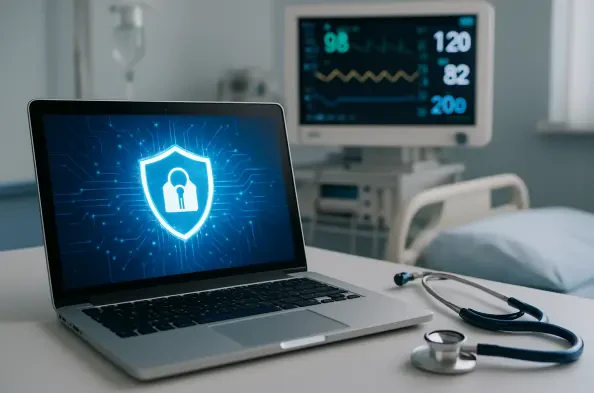Introduction to Cybersecurity Challenges in Healthcare
Imagine a hospital system grinding to a halt, unable to access critical patient records or operate life-saving equipment due to a ransomware attack, a scenario that is not a distant threat but a stark reality for many healthcare institutions today. Cybersecurity has become a cornerstone of operational integrity in the healthcare sector, where the stakes involve not just financial losses but human lives. With the industry increasingly reliant on digital platforms for patient care and data management, understanding how leading institutions like Tampa General Hospital tackle cyber risk quantification offers vital insights into safeguarding this vulnerable landscape.
The healthcare industry stands at a critical juncture, grappling with an unprecedented wave of cyber threats. Data breaches, ransomware, and supply chain attacks have surged, targeting sensitive patient information and disrupting essential services. As digital transformation accelerates, hospitals face mounting pressure to balance innovation with robust security measures, all while navigating stringent regulatory demands. This report delves into the strategies employed by Tampa General Hospital to address these challenges, highlighting broader implications for the sector.
The Importance of Cybersecurity in Healthcare
The healthcare sector remains one of the most targeted industries for cyberattacks due to the immense value of patient data on the black market. Protecting this information is not merely a technical necessity but a moral imperative, as breaches can compromise patient trust and safety. Beyond data protection, cybersecurity ensures the continuity of care delivery, preventing disruptions that could delay treatments or endanger lives in an environment where every second counts.
Financially, the repercussions of cyber incidents are staggering, often costing millions in recovery, legal fees, and reputational damage. Operationally, hospitals must contend with downtime and resource reallocation to address breaches, diverting attention from patient care. As digital systems become integral to healthcare delivery—spanning electronic health records to telemedicine—any vulnerability can cascade into systemic failures, amplifying the urgency for robust defenses.
Tampa General Hospital, a prominent player in the industry, exemplifies the intersection of technological advancement and cybersecurity needs. The push toward innovation, coupled with regulatory pressures like HIPAA compliance, shapes how such institutions prioritize security investments. Their approach offers a window into how leading hospitals adapt to an evolving threat landscape, setting benchmarks for others to follow.
Current State of Cyber Risk in Healthcare
Emerging Trends and Challenges
The cybersecurity landscape in healthcare is undergoing rapid transformation, driven by sophisticated threats like ransomware, which often locks critical systems until hefty payments are made. Supply chain vulnerabilities have also emerged as a significant concern, with attackers exploiting third-party vendors to gain access to hospital networks. Meanwhile, the adoption of telemedicine and connected medical devices introduces new entry points for cyber threats, demanding adaptive security measures.
Beyond specific attack vectors, the responsibility for cybersecurity is shifting toward a collaborative model across organizations. Third-party risks, in particular, require hospitals to scrutinize vendor partnerships and embed security standards into contracts. This cross-organizational accountability is essential as breaches originating from external partners can be as devastating as internal failures, necessitating a unified front against cyber risks.
Amid these challenges lie opportunities for innovation. Partnerships between healthcare providers and technology firms can foster advanced risk management solutions, while data-driven approaches enable more precise threat identification. By leveraging analytics and shared intelligence, the industry can move from reactive responses to proactive defenses, potentially reshaping how cyber risks are managed in the years ahead.
Industry Data and Projections
Statistical insights underscore the severity of cyber risks in healthcare, with IBM’s latest report revealing an average cost of $7.42 million per data breach, far exceeding the global average across industries. Detection and containment times are equally alarming, averaging 279 days compared to a global benchmark of 242 days, prolonging exposure and damage. These figures highlight the urgent need for enhanced security frameworks tailored to the sector’s unique vulnerabilities.
Looking forward, investments in cybersecurity are projected to grow significantly, driven by both necessity and regulatory scrutiny. Spending on security solutions is expected to increase steadily from the current year through 2027, as hospitals prioritize tools for threat detection and response. Regulatory bodies are also tightening oversight, pushing organizations to allocate more resources toward compliance and risk mitigation strategies.
As threats evolve with technological advancements, these metrics are likely to shift. Emerging attack methods, such as those targeting artificial intelligence systems or Internet of Things devices, could further inflate costs and detection timelines. Staying ahead of these developments will require continuous adaptation, with a focus on predictive analytics and scalable security infrastructures to address future risks.
Unique Cybersecurity Challenges at Tampa General Hospital
Tampa General Hospital faces a distinct set of obstacles in its cybersecurity efforts, largely due to reliance on legacy systems that are difficult to update. Regulatory constraints, such as FDA certifications for medical devices, often prevent timely patches or upgrades, leaving potential vulnerabilities exposed. This technological inertia poses a persistent challenge in maintaining a secure digital environment.
As a research hospital, additional complexities arise in protecting intellectual property while facilitating necessary data access for innovation. Striking a balance between openness for research purposes and stringent data protection measures requires customized approaches to security. The dual role of caregiver and innovator amplifies the stakes, as any breach could impact both patient care and cutting-edge medical advancements.
To address these issues, Tampa General employs proactive risk assessments to identify and prioritize vulnerabilities within its infrastructure. Tailored security protocols are developed to safeguard sensitive areas, while regular audits ensure ongoing vigilance. Such strategies demonstrate a commitment to mitigating risks without stifling the hospital’s mission of progress and discovery in healthcare.
Regulatory Landscape and Compliance in Healthcare Cybersecurity
Navigating the regulatory framework is a cornerstone of cybersecurity in healthcare, with laws like HIPAA setting strict standards for data protection and patient privacy. These mandates compel hospitals to implement comprehensive security measures, from encryption to access controls, ensuring that patient information remains confidential and secure. Compliance is not optional but a fundamental aspect of operational legitimacy in this sector.
At Tampa General Hospital, aligning security practices with regulatory requirements shapes daily operations and strategic planning. The integration of compliance into risk quantification allows for a clearer understanding of potential penalties or operational impacts of non-compliance. This alignment ensures that security investments are not only reactive to threats but also proactive in meeting legal obligations.
Vendor management processes at Tampa General also reflect a regulatory focus, with security standards embedded into contracts to mitigate third-party risks. By prioritizing compliance in these partnerships, the hospital reduces exposure to breaches originating outside its direct control. This systematic approach underscores the importance of weaving regulatory considerations into every facet of cybersecurity strategy.
Future Directions in Healthcare Cybersecurity
The horizon of healthcare cybersecurity is marked by the promise of emerging technologies like AI-driven threat detection, which can analyze patterns and predict attacks before they occur. However, potential disruptors, such as increasingly sophisticated ransomware tactics, loom large, challenging even the most advanced defenses. Staying ahead will require continuous innovation and adaptation to counter these evolving threats.
Shifts in consumer expectations and regulatory landscapes are anticipated to further influence cybersecurity priorities. Patients demand greater transparency and assurance regarding data protection, while regulators may impose stricter guidelines as cyber incidents rise. Global economic conditions could also impact funding for security initiatives, necessitating efficient allocation of resources to address the most pressing risks.
Tampa General Hospital positions itself as a forward-thinker by leveraging data-driven strategies and fostering collaboration between its CIO and CISO. This partnership serves as a model for integrating security into business growth, ensuring that innovation does not come at the expense of safety. Other institutions can draw inspiration from this approach, adopting similar frameworks to prepare for future cybersecurity challenges.
Conclusion and Strategic Recommendations
Reflecting on the insights gathered, Tampa General Hospital’s journey in quantifying cyber risk reveals a powerful blend of technical acumen and strategic communication that bridges gaps between IT and executive leadership. Their collaborative model between CIO and CISO illuminates a path where security becomes a shared priority, not a siloed concern. The hospital’s success in translating complex threats into tangible financial and operational impacts marks a significant achievement in fostering informed decision-making.
Looking ahead, actionable steps emerge as critical for the broader healthcare industry. Establishing robust CIO-CISO partnerships should stand as a priority to align security with organizational goals. Emphasizing vendor risk management through stringent contract standards can further shield against external vulnerabilities. Additionally, investing in analytics to enhance risk communication offers a practical tool for demystifying cyber threats to non-technical stakeholders.
Beyond these measures, fostering a culture of continuous learning and adaptation proves essential. Healthcare organizations must commit to staying abreast of technological advancements and threat evolutions, ensuring that their defenses remain agile. By building on examples set by institutions like Tampa General Hospital, the sector can collectively strengthen its resilience against an ever-shifting cyber landscape.






